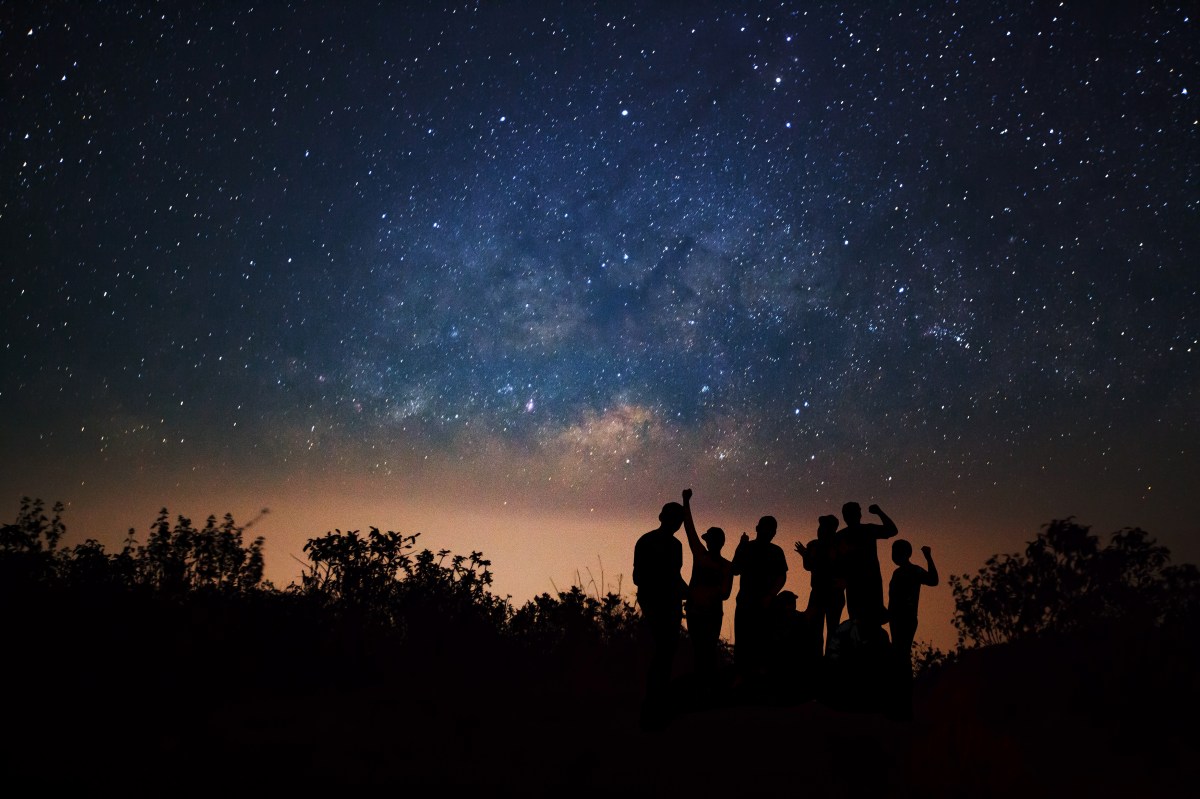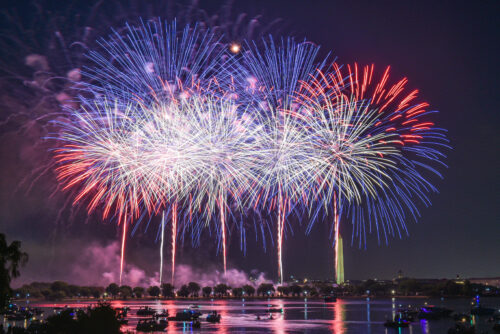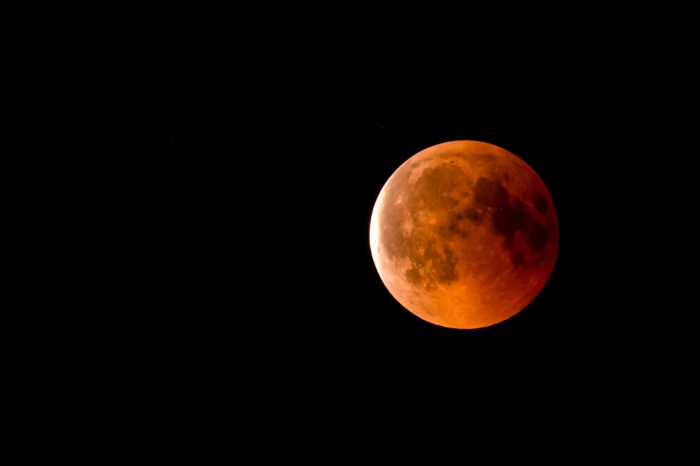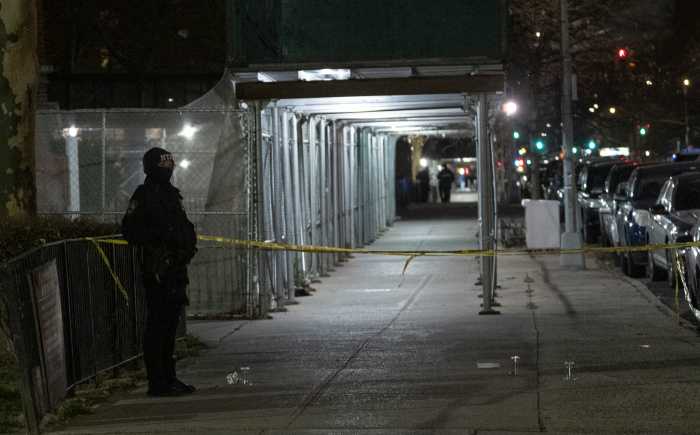Make a wish — shooting stars will be visible from Long Island this week.
The Orionids will light up the night sky on Oct. 21 and 22, creating a dazzling display of astronomical proportions. Here’s everything you need to know about the meteor shower and how to catch a glimpse from Long Island.
What can viewers expect from the Orionids?
The Orionids are one of the best meteor showers of the year, along with the Perseids in mid-August. Viewers can expect to see around 20 shooting stars an hour under ideal night sky conditions. The Orionids’ exceptional speed create some of the brightest shooting stars known to man.
These fast-moving bits of space rock often leave incandescent trails of light that streak across the sky, lasting for several seconds or even minutes before fading, according to NASA. They also sometimes produce fireballs, which create explosions of light in the night sky.
The shooting stars most often appear white, but occasionally are light yellow when meteors contain bits of sodium or iron, according to EarthSky. Even more rare for the Orionids, but not unheard of, are green shooting stars made of nickel or magnesium.
Some meteors even change color as they break down in the earth’s atmosphere — keep your eyes peeled for colorful streaks across the night sky!
What are the Orionids?
The Orionids — named after Orion, the constellation the shooting stars appear to come from — peak every year in late October when the earth crosses the orbit of the iconic Halley’s Comet.
As earth passes through the comet’s debris stream, little bits of ice and rock — which Halley’s Comet leaves behind when it warms as it approaches the sun — enter the earth’s atmosphere and burn up, creating the phenomenon we call shooting stars (a term originally coined by Shakespeare in 1597).
The Orionids are incredibly fast; its meteors enter earth’s atmosphere at 41 miles per second, or 150,000 mph. That speed creates the glowing trains of light we commonly associate with shooting stars.
How to watch the 2025 Orionids
The shooting stars often streak outwards from the star Betelguese — Orion’s right shoulder — but are visible across the entire night sky. While Orion rises a little before 11 p.m. on Oct. 21 and 22, the best viewing hours are between midnight and just before dawn, when the sky is darker and Orion is higher above the horizon.
Night sky events can sometimes be difficult to view from Long Island due to light pollution, but there’s good news, too — this year’s Orionids meteor shower coincides with a new moon, greatly improving stargazers’ chances of glimpsing a meteor.
Don’t see your favorite spot listed below? Don’t worry — all you need to enjoy the 2025 Orionids is a view of the night sky. Head to an open space near you, look up, and get ready to make a wish!
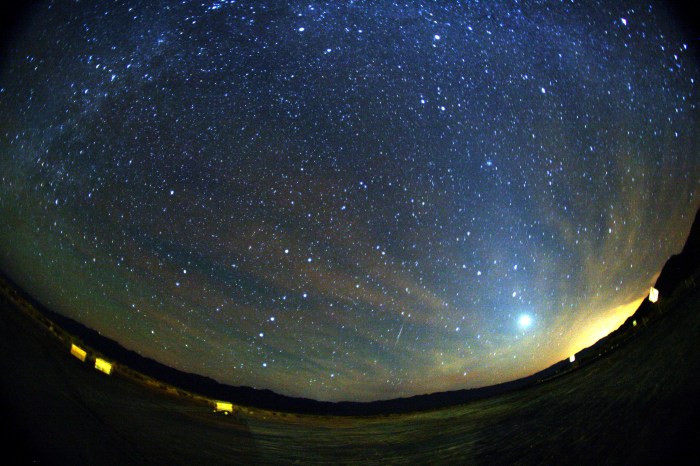
Best stargazing spots on Long Island
For ideal conditions, head to one of these stargazing spots, let your eyes adjust to the dark for 20 to 30 minutes, and enjoy the show.
This stargazing spot is a South Shore favorite. Head to Field #6 for an ocean view as a backdrop to the shooting stars.
1 Ocean Pkwy, Wantagh.
The Robert Moses Lighthouse is a picture-perfect detail for any veteran or novice astronomy photographer.
Robert Moses Cswy, Babylon.
3.) Humes Preserve
This 27-acre preserve has a large parking lot perfectly situated on the top of a hill, allowing viewers to stargaze over an expansive meadow. The park’s hours are extended on Oct. 21 and 22 so the public can enjoy a scenic view of the Orionids.
349 Oyster Bay Road, Mill Neck; To learn more about the North Shore Land Alliance and their preserves, please visit their website.
4.) Wawapek Preserve
This 32-acre preserve is a must-visit for stargazers on the North Shore of Nassau County. The park’s hours are extended on Oct. 21 and 22 so the public can enjoy a scenic view of the Orionids.
3 Mowbray Ln North, Cold Spring Harbor; To learn more about the North Shore Land Alliance and their preserves, please visit their website.
5.) Cupsogue Beach
The flat, scenic beach provides an amazing view of the night sky.
975 Dune Road, Westhampton.
The Astronomical Society of Long Island is hosting a public viewing event at the Vanderbilt Planetarium on Oct. 22. Head over to see the Orionids from an especially dark sky — plus, get some stargazing pointers from the best!
180 Little Neck Rd, Centerport.
Note: Some of these locations ask for stargazing permits. Make sure to check the guidelines for your nearest park.




